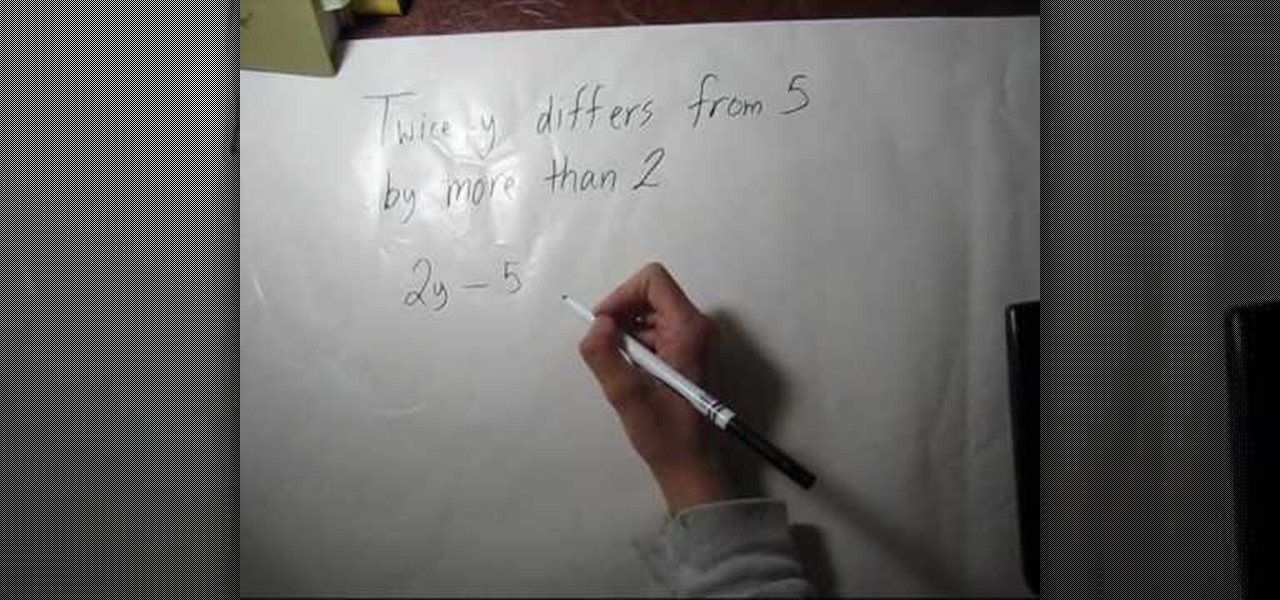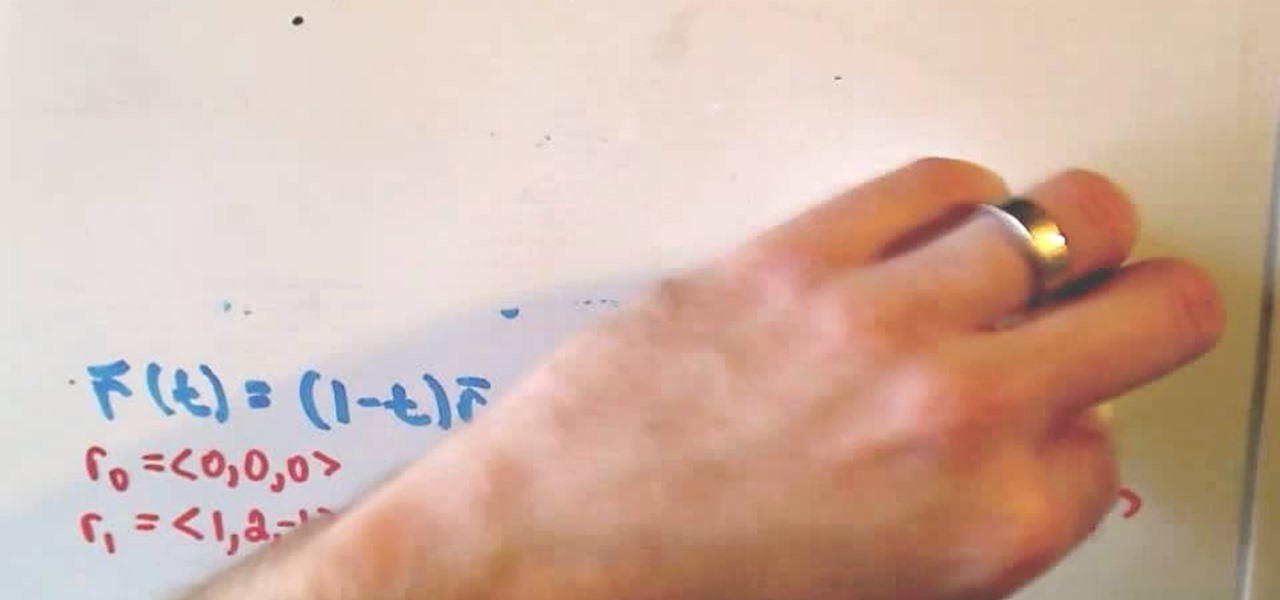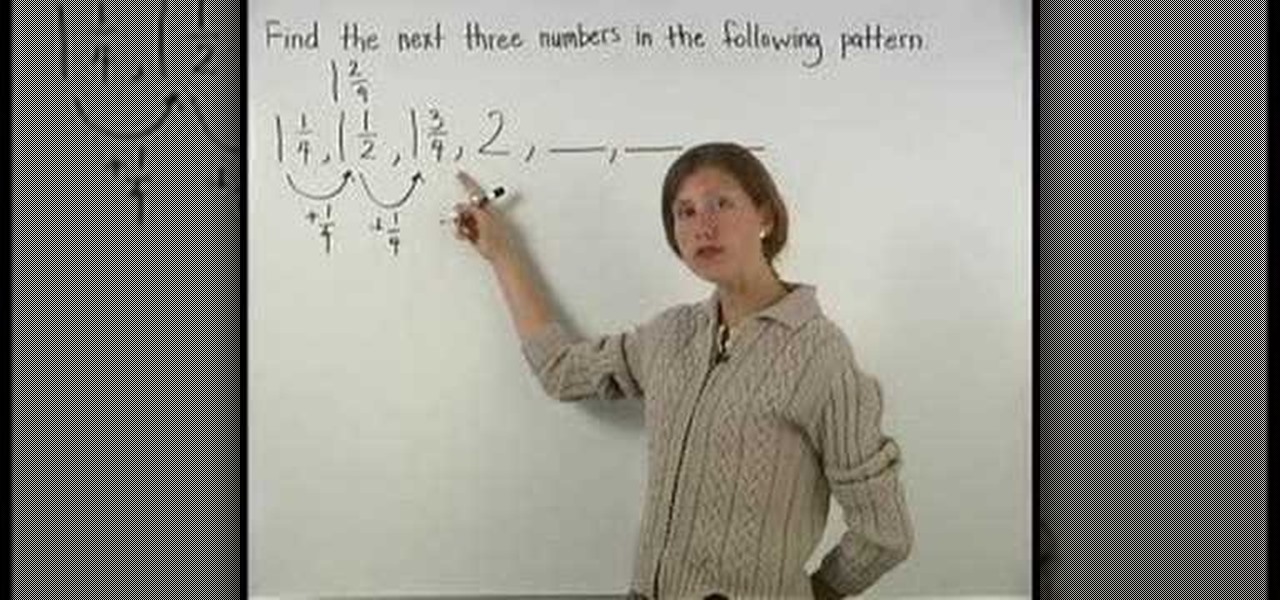Math How-Tos


How To: Add 3 fractions with common denominators
In this math tutorial the instructor shows us how to add three fractions with common denominators. He says that it is similar to adding two fractions with common denominator. He tells us first to add all the numbers in the numerator which gives us a new number which is the numerator in our answer and the denominator to our answer is the original common denominator. Now, if the resulting fraction is improper fraction, you will have to convert it into a mixed number. In this video the author sh...

How To: Find a number given Its percent
This how-to video is about how to find a number when its percent is given. This video is really helpful and effective in finding the number when the percent is given, the following steps are explained in the video to find the number when its percent is given:

How To: Rationalize a denominator
This is an illustrative video on how to rationalize a denominator. Let us take an example of 1 over root 2. If we have to rationalize this denominator, we need to multiply it and divide it by root 2. You will get root 2 over 2. Similarly if you want to rationalize 4 root 6 over root 2, we have to multiply and divide it by root 2. We will get 4 root 12 over 2. That is equal to 2 root 12. In this way you can find rationalize the denominator easily.
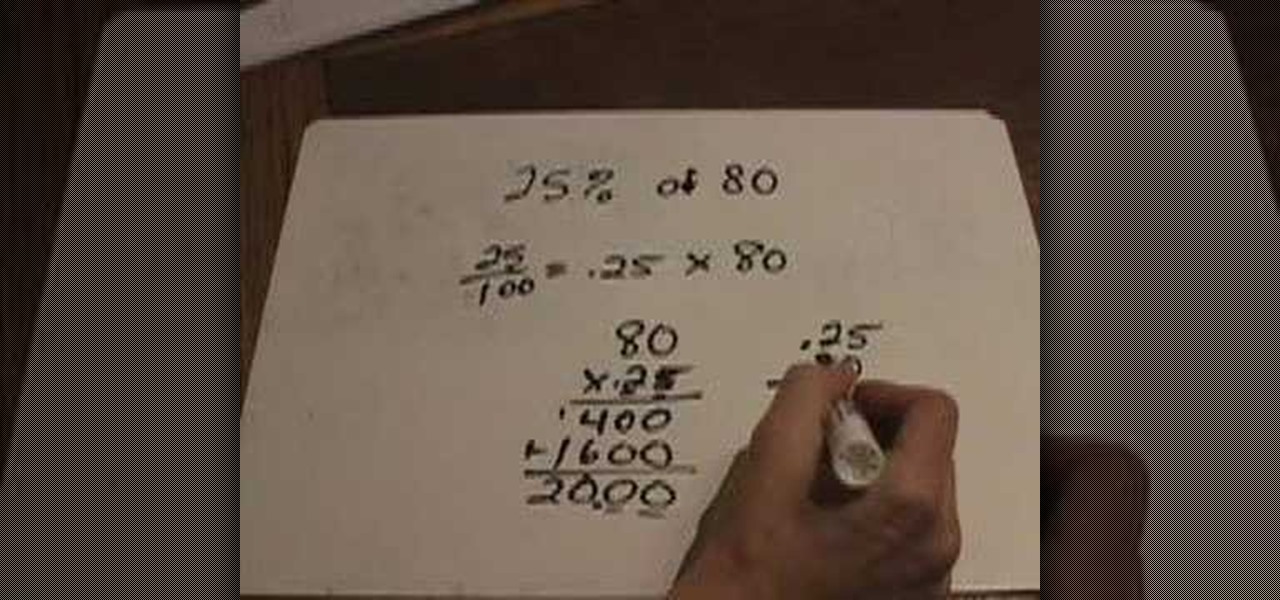
How To: Find the percentage of a number
In this tutorial the author explains of how to compute percentages of a given number. He explains that x percent of some number y is x multiplied by y and divided by 100. He says that of means multiply and percentage means for hundred. He goes on and explains this concept with numerous examples. He suggests a small trick to move the decimal point of a number two digits to the left to get it divided by hundred. The author demonstrates many more similar tricks and short cuts using which one can...

How To: Find a common denominator to add fractions
In this video the tutor shows how to add fractions. Fractions are numbers in the form a/b, where a and b are normal numbers. He shows that to add two fraction we need their denominators to be same. If they are not same we need to take their least common multiple and change the fractions so that they have equal denominators. Now the numerators of these fractions can be directly added and the resultant fraction contains this numerator along with the original common denominator. Now this fractio...
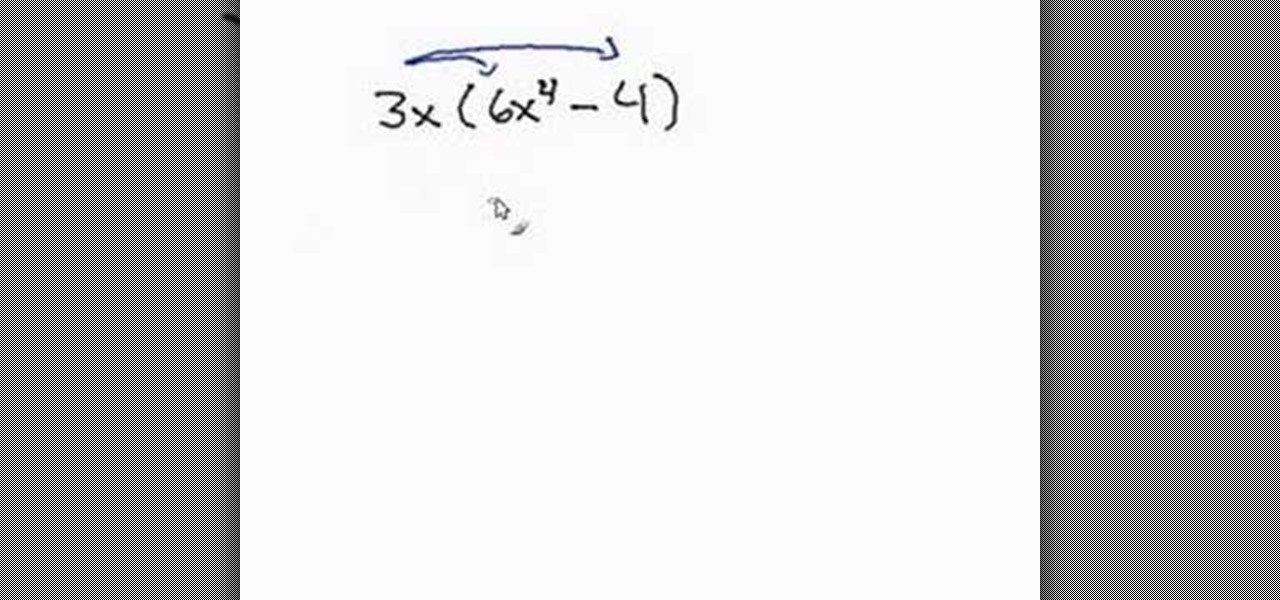
How To: Apply the distributive property
The distributive property is a very important factor to consider in math and may save you a lot of trouble on your math homework. For values which lie right outside parentheses, you will need to distribute this value across the contents of whatever is inside the parentheses. You will need to multiply the value outside of the parentheses by first the first term inside the parentheses and then by the following terms inside the parentheses, distributing the value across all the terms found insid...
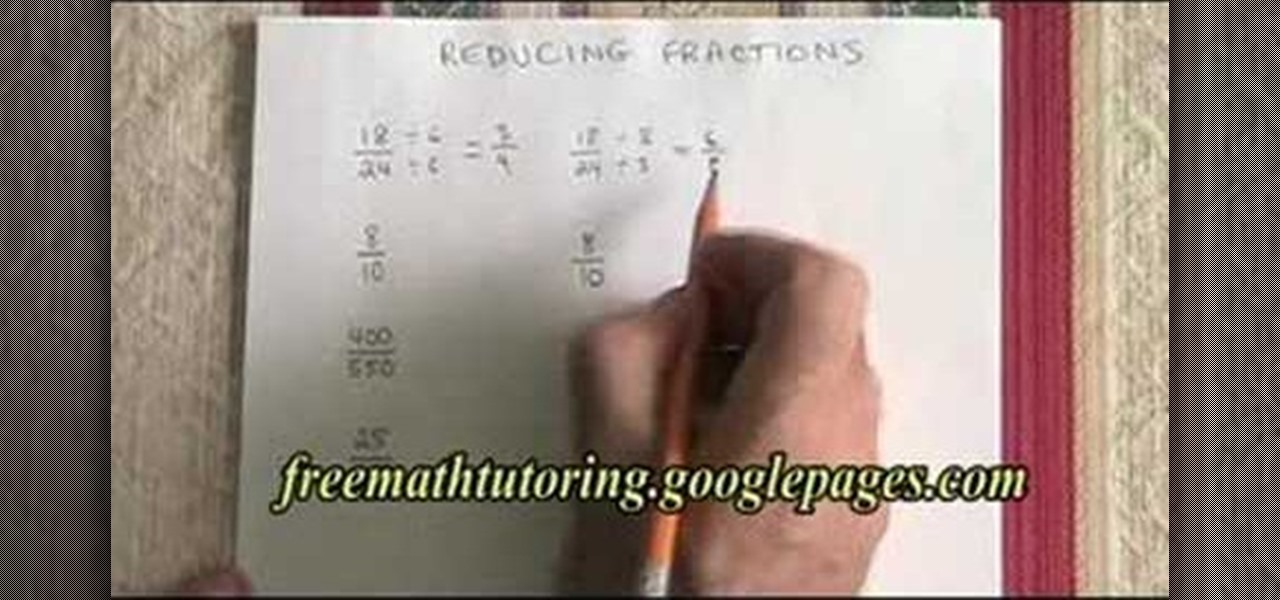
How To: Reduce fractions
This video shows you how to easily reduce fractions. A fraction contains a numerator and a denominator. The numerator is the number on the top and the denominator is the number at the bottom of the fraction. The first thing you have to do to reduce fractions is look for the greatest common factor between the numerator and the denominator and divide both top and bottom of the fraction by that common factor. (e.g.. 18/24 - the greatest common factor is 6 => (18/6)/(24/6)= 3/4. Continue reducing...

How To: Add to fractions with uncommon denominators.
Wondering how to add fractions with uncommon denominators?

How To: Find a missing part of a triangle, similar to another
In this tutorial the author shows how to find out the missing part of a triangle that is similar to another triangle. He explains the concept of similar triangle diagrammatically by showing that similar triangles have similar angles and parallel sides. Now he labels sides of similar triangles and marks the value of unknown side as variable x. Now in similar triangles as the lengths of sides of proportionate he shows how to write a equation of proportion and solves it finding the missing part ...
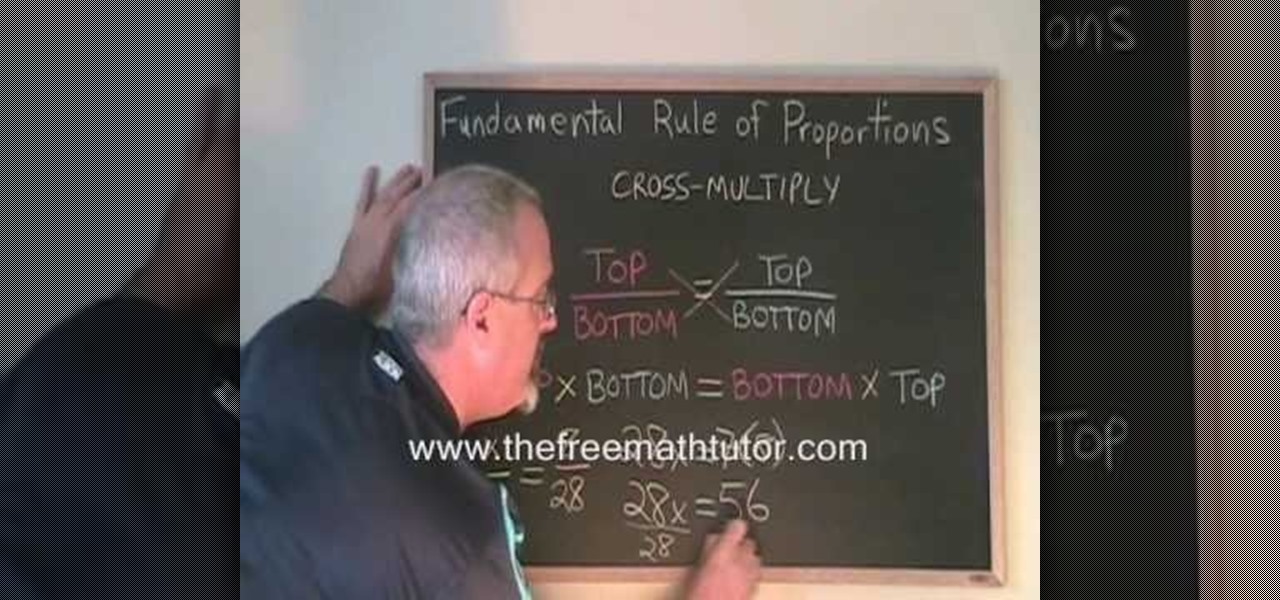
How To: Apply the fundamental rule of proportions
Learn how to apply the fundamental rule of proportions just follow simple few steps. First step is take two fractions and equate them. For example (Top/Bottom)=(Top/Bottom).

How To: Prove side-side-side congruency
In this "Math Made Easy" geometry episode, you learn how to prove that two triangles are congruent (equal) by using the "side-side-side" evidence. By using "side-side-side" to prove that two triangles are congruent, you are stating that all the respective corresponding sides of two triangles are equal in length thus proving the triangles are congruent. The narrator in this tutorial provides you with definitions about statements, proofs, and congruency. This becomes useful when setting up a ta...

How To: Find the area of a square
This video explains to you how to find the area of a square. The area of a square is given by the formula
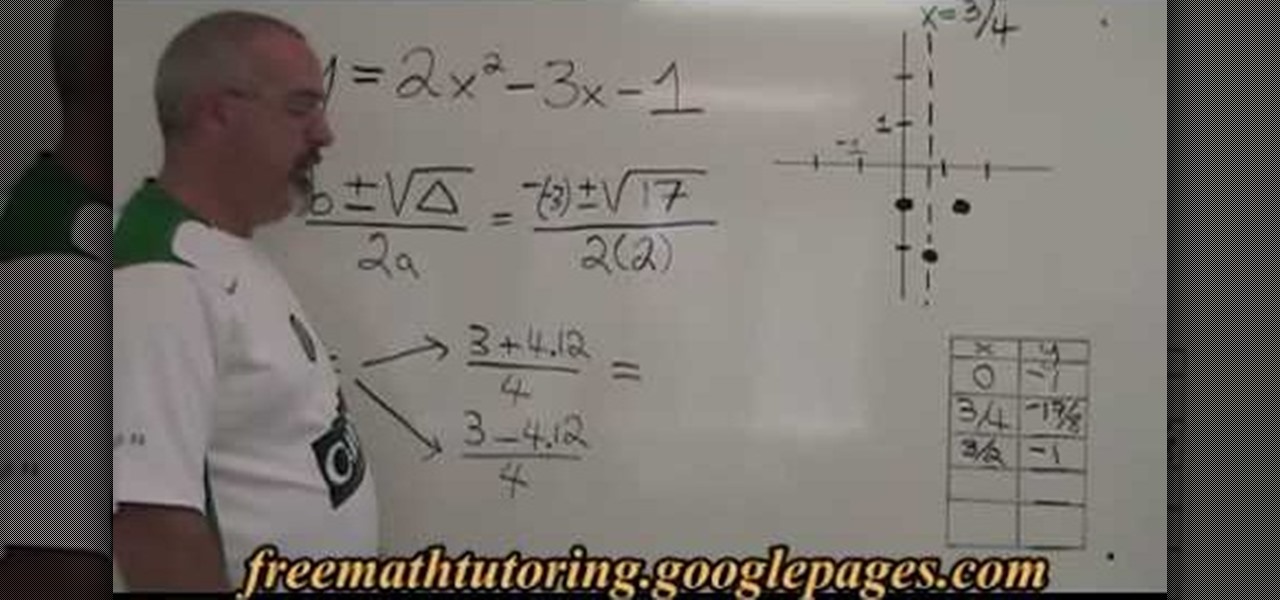
How To: Find the zeros when graphing a quadratic equation
In this tutorial the instructor shows how to graph a parabola and also how to find its roots which are also known as zeroes. He gives the quadratic formula of how to find x-intercepts of a parabola. He takes an example and substitutes the values and finds out the values of the roots of the parabola. Now he substitutes these values in the equation to obtain the corresponding y coordinates. Now using these pairs of values he plots the parabola on a graph and draws it. This video shows how to fi...
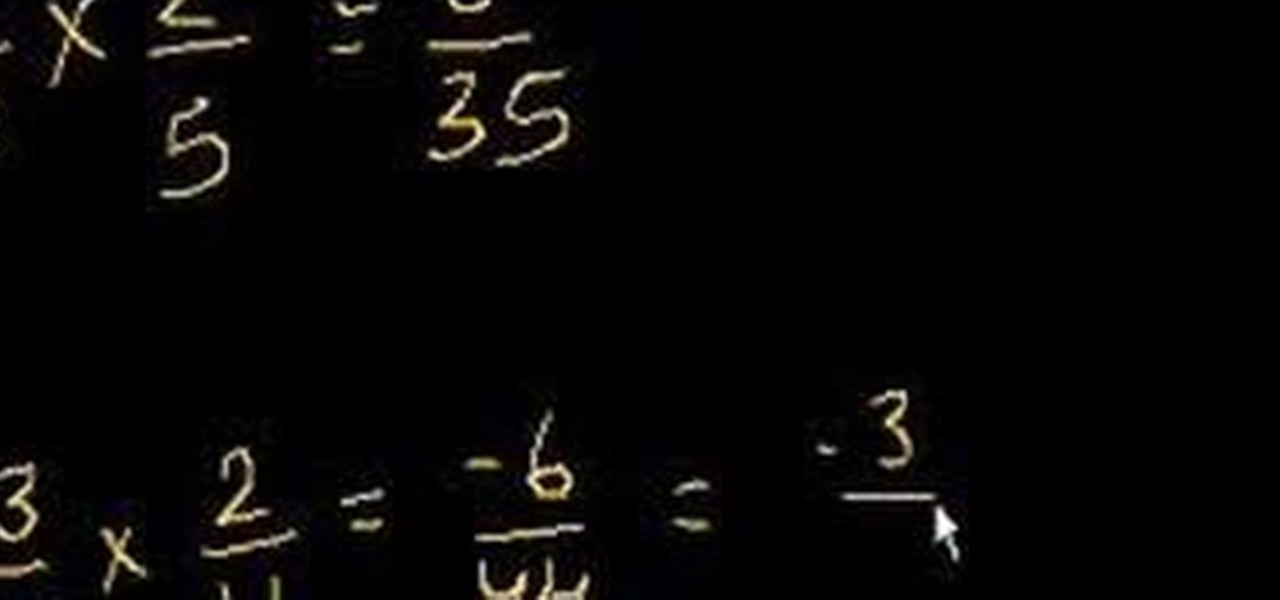
How To: Understand how to multiply fractions
Multiplying fractions are very simple, just multiply the numerators of the fractions to get the new numerator, and multiply the denominators of the fractions to get the new denominator. Let's say we have 2 fractions 1/2 and 1/2 when multiplying them 1/2x1/2=1/4 [1x1/2x2].

How To: Solve direct proportions in Algebra
This video describes how to solve direct proportions in algebra which is an important and useful skill in everyday life, school and at work. In this video one would learn key elements of a direct proportion and learn to separate them into a more means more or less means less types of proportion. For example if one had a direct proportion of the more means more type one would simply gather the logical numbers and follow the two simple rules for solving. Overall this video is simple and useful ...
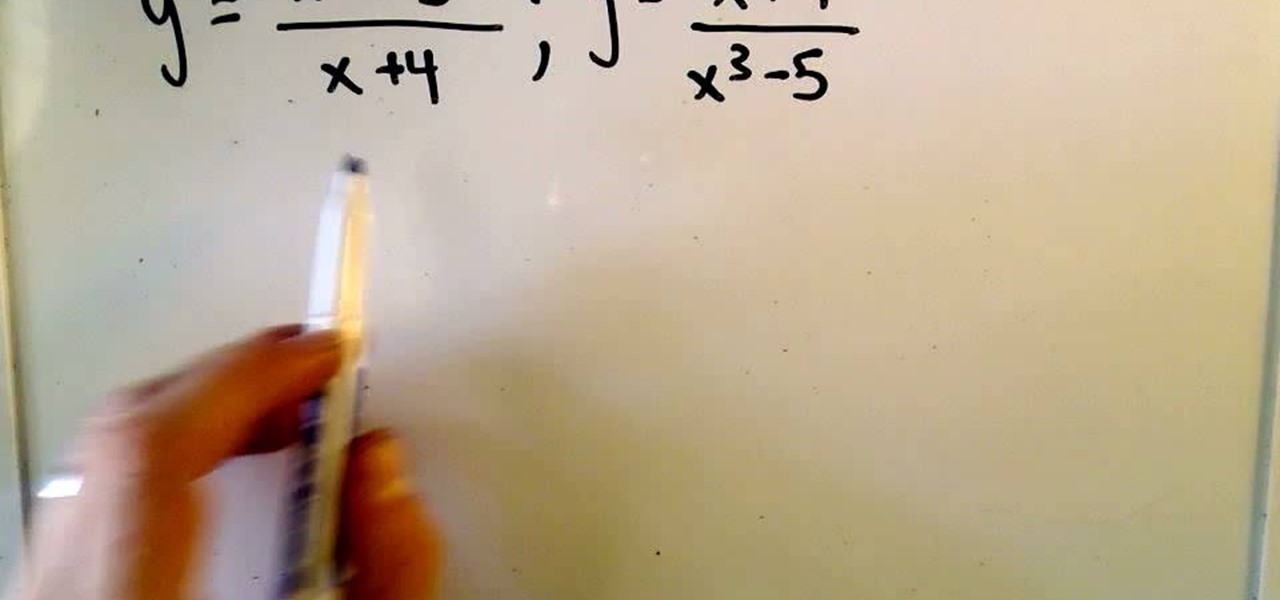
How To: Find the horizontal asymptotes of rational functions
Finding horizontal asymptotes is very easy! Not all rational functions have horizontal asymptotes. the function must satisfy one of two conditions dependent upon the degree (highest exponent) of the numerator and denominator. If the degree of the numerator is equal to the degree of the denominator, then the horizontal asymptote is y= the ratio of the leading coefficients. If the degree of the denominator is greater than the degree of the numerator then y= 0. If the degree of the denominator i...

How To: Find the area of a rectangle quickly and easily
This simple video teaches "how to find the area of a rectangle" in a very simple way. Area is the amount of squares inside a two dimensional shape.

How To: Multiply and divide radicals
Radicals or square roots can be a little tricky when it comes to multiplying and dividing them, but this helpful video will guide you through all the steps you need in order to calculate your answers correctly.

How To: Find the volume of a rectangular prism easily
Finding the volume of a rectangular prism is something you will need to master to pass geometry. You may also use this equation in some science classes. This tutorial will show you exactly how to find the volume of a common rectangular prism. The video also offers two different examples and step by step instructions. Follow along with this video and you will soon have this concept down pat.

How To: Find the mean and standard deviation
Mean and standard (or normal) deviation may be hard to understand at first, but with the help of this handy little guide from the pros at Exam Solutions you will be up to speed in no time.
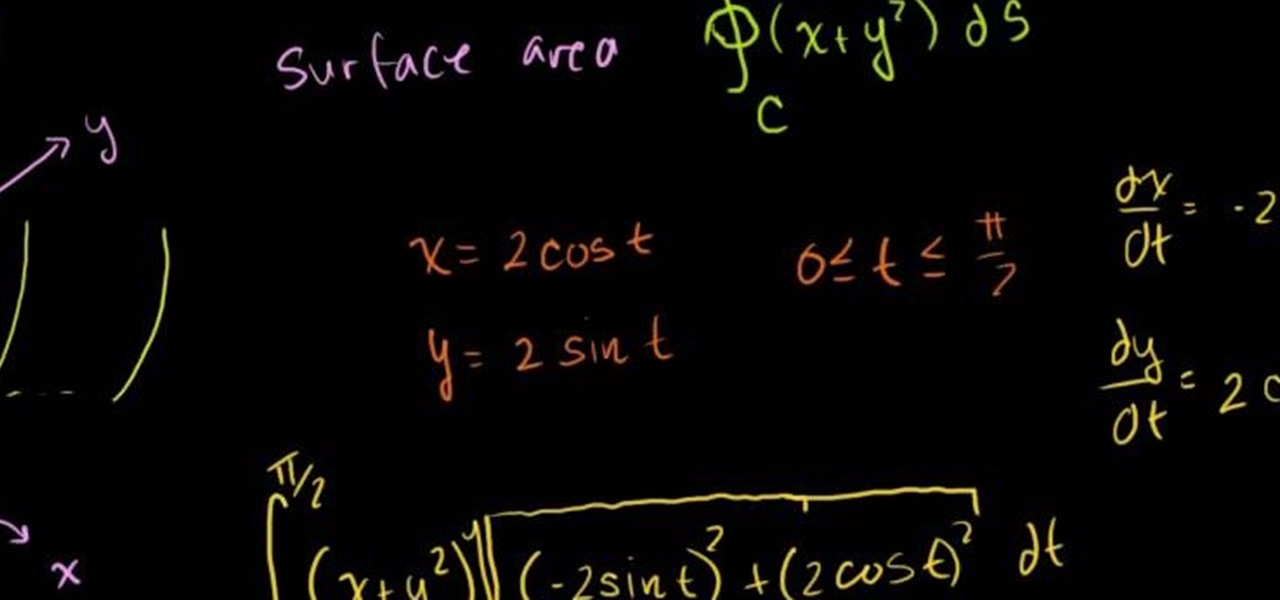
How To: Solve a line integral over a closed path
Line integrals will no longer be the feared terrorist of the math world thanks to this helpful guide from the Khan Academy. Marvel at the ease in which the integral is taken over a closed path and solved definitively. Then take out a sheet of paper and see if you can do the same.

How To: Convert fractions to decimals quickly and easily
This video shows you how to easily convert a fraction to decimals. To convert a fraction to a decimal, you simply divide the numerator by the denominator. You first need to move the decimal point in the divisor to the right until it is a whole number. Then, you have to move the decimal point in the dividend to the right by the same number of places the decimal point was moved. Then divide the new dividend by the new divisor. Please note you may need to move the decimal point two places to the...
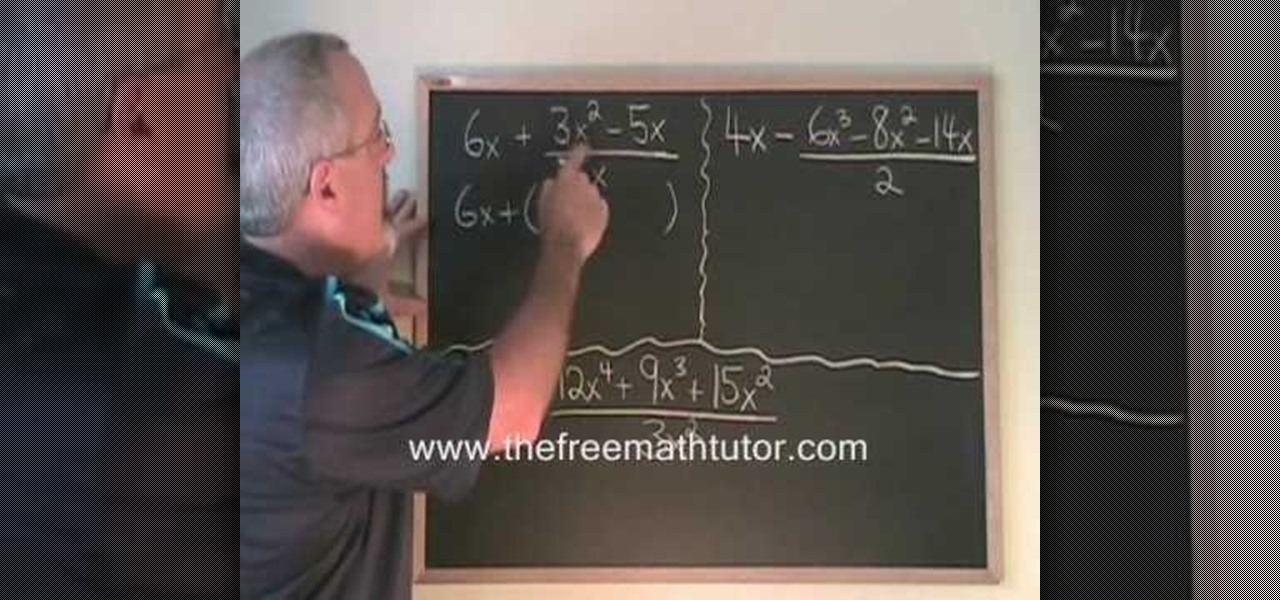
How To: Deal with "giant fractions"
Doug tries to teach us some basic math fractions. In this particular case, Doug teaches how to do polynomial operations. He uses a chalk board and step by step shows his work on how to do this math. He uses the PEMDAS method but does not explain it. That is parenthesis first, exponents second, multiplication third, division fourth, addition fifth and subtraction last. A straight forward video and well explained mathematically. Doug includes links to the next few videos in order to see the las...
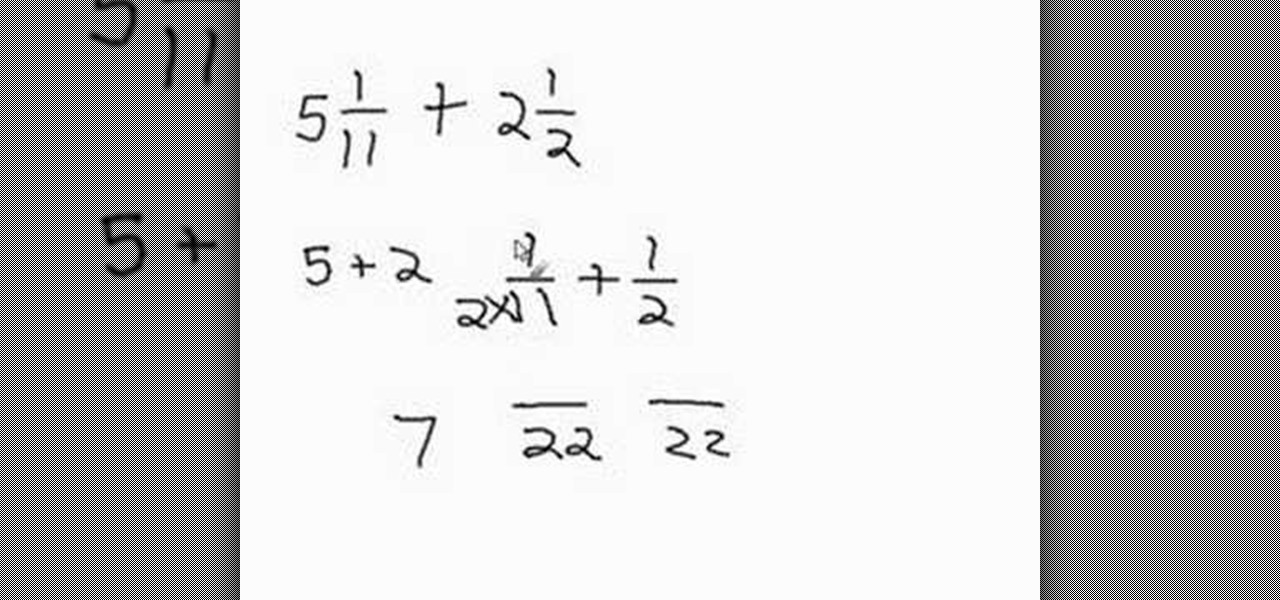
How To: Add mixed numbers with different denominators
This simple video tutorial teaches you how to add mixed numbers with uncommon denominators. It takes a step-by-step approach to the issue by first explaining how to separate the whole numbers into whole numbers and fractions, and then adding up those two groups of numbers separately. The video uses simple and easy calculations with audio instructions to illustrate the procedure. Lasting for only a little over a minute, the video manages to explain the procedure rather adequately.
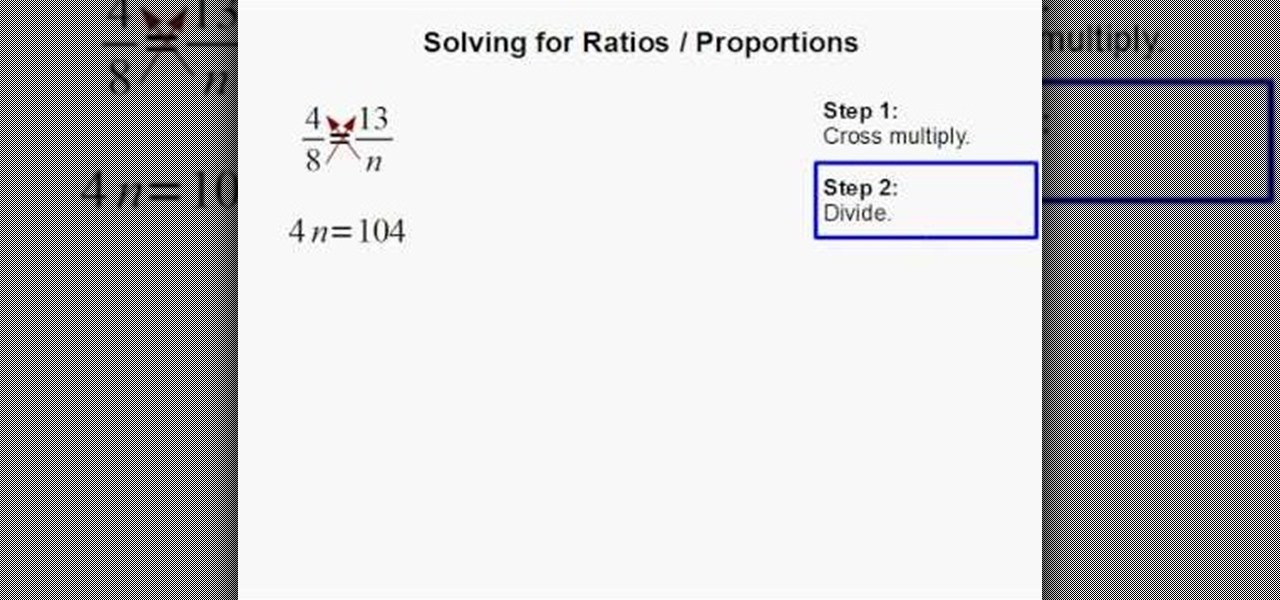
How To: Solve for ratios and proportions
In this tutorial the instructor shows how to solve ratios and proportions. He gives a two step approach to solve an equality of two fractions in which the value of a variable in unknown. He says that in the first step we should cross multiply the numbers across the diagonal. In the second step we need to divide and simplify to get the value of the unknown variable. This video gives a simple two step method on how to solve ratios and proportions.
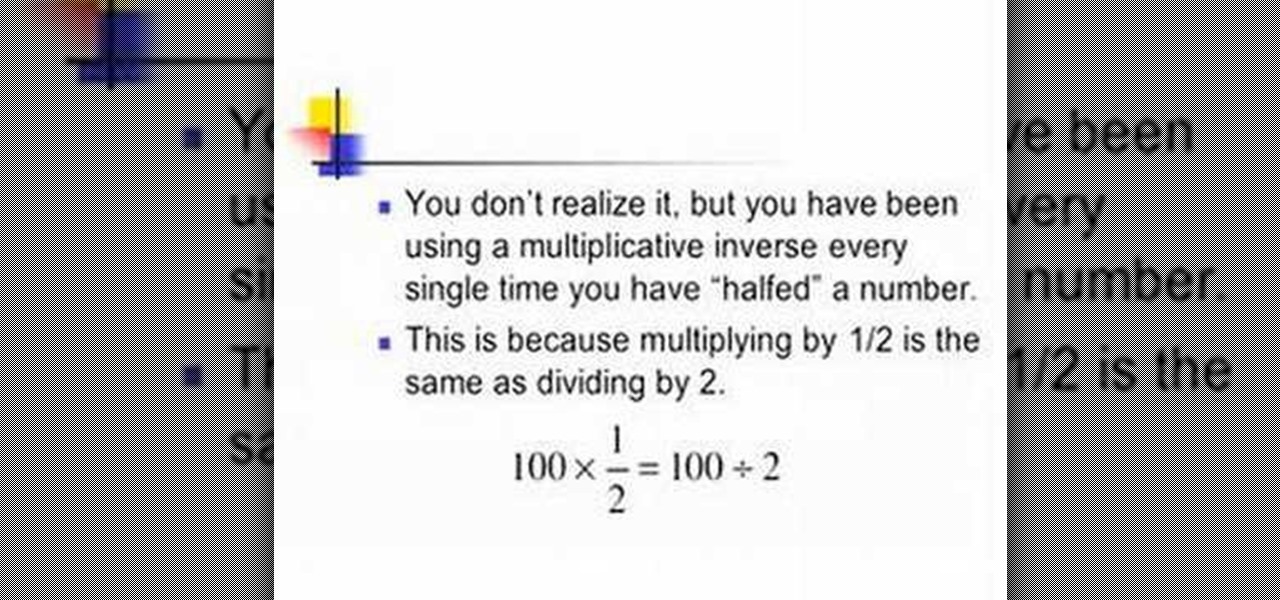
How To: Divide and reduce fractions
This is a tutorial on the basics of dividing fractions. The process the video teaches are linear equations where one fraction is divided next to another with a division sign in between. The top numbers are divided and then the bottom and thereby you get the answer. However not all numbers are divisible. When this happens the video teaches the method of multiplicative inverse whereby the divider fraction is flipped upside down which then changes the problem to one of multiplication--think of t...
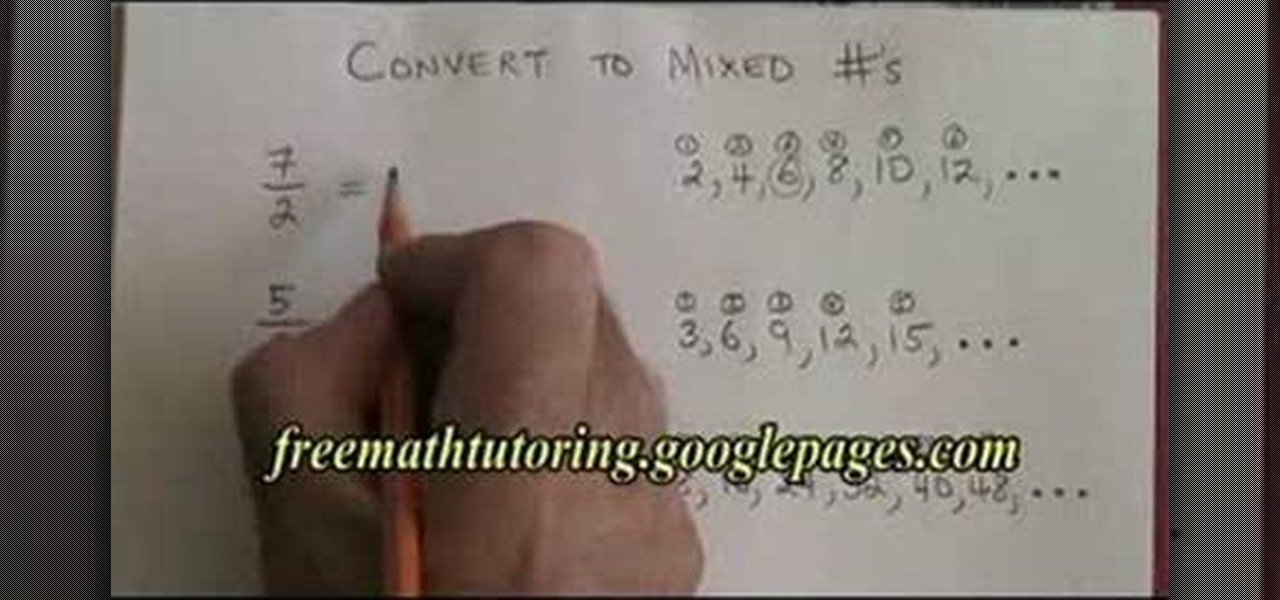
How To: Convert improper fractions to mixed numbers
In this tutorial the instructor shows how to convert a improper fraction to mixed number. In the example the instructor takes the denominator of the mixed fraction and writes it beside and keeps adding it self to the latest number and he keeps on doing that way generating a series until he reaches the value of the numerator. Now he counts the number of occurrences of the numbers in the series before the value of the numerator which gives the value of the whole number in the mixed fraction. No...
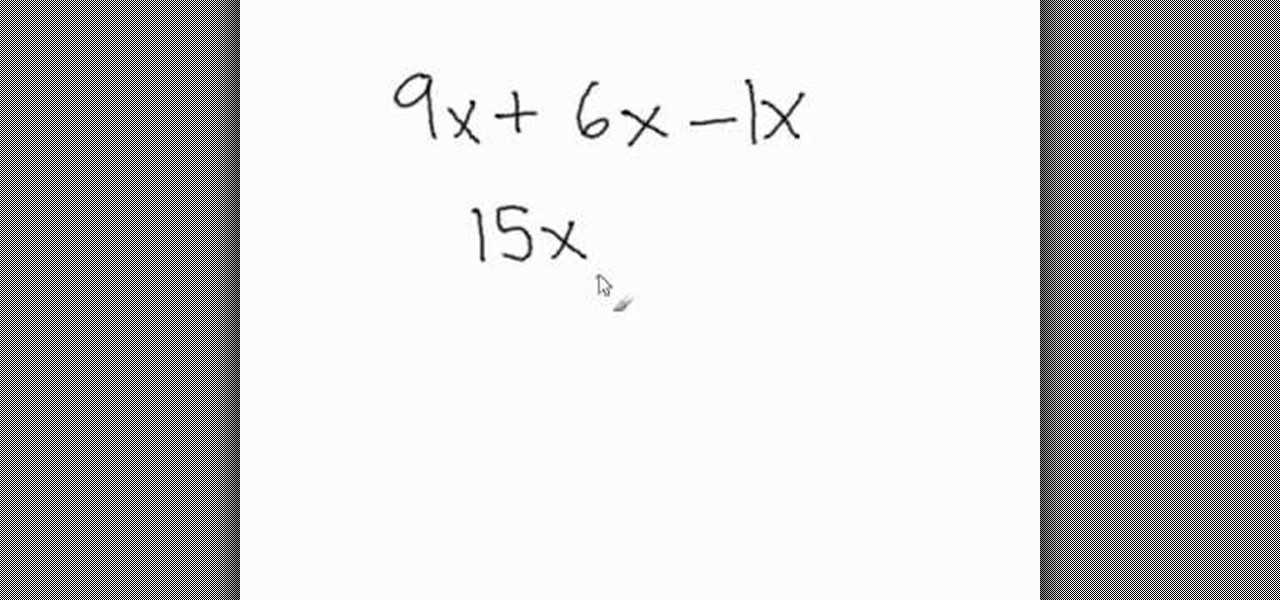
How To: Add and subtract variables
Math Problem Generator gives a video about how to add and subtract variables. All you have to do is combine the coefficient, which is the number that comes before the variable. The numbers are added or subtracted but the variable remains the same. In the video, the example given is 9x + 6x - x. First you add 9x + 6x, giving you 15x. The equation is now 15x - x. If a variable has no number written in front of it, that means the value is 1. So the equation is 15x - 1x and that is equal to 14x.
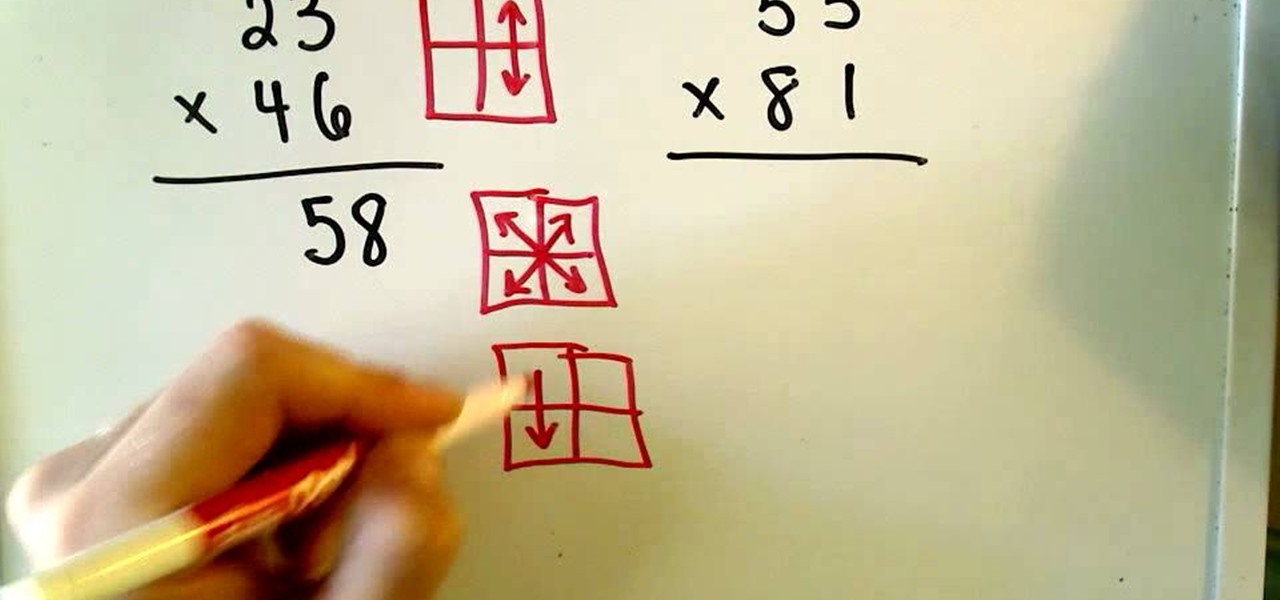
How To: Do a fun fast multiplication trick
This how-to video is about multiplying numbers in a very quick and in a new manner. Multiplication of two - 2 digit number is explained in this video, To do this multiplication we need to follow three steps, let's follow this method with an example, let's say that we want to multiply 23 with 46, let's write the numbers like this, 23*46 (multiplying 23 with 46), the answer is 1058.

How To: Divide fractions in two easy steps
Want to finally get on top of those icky fraction questions? Learn how to multiply and divide fractions the easy way. In this particular video, you will receive some very useful tips on how to solve most types of fractions. It will teach you exactly how to multiply and divide fractions by multiplying the numerators and the denominators, whether the fraction has like denominators or not. After watching this tutorial, you will be able to solve those dreaded fractions more quickly and a lot easi...
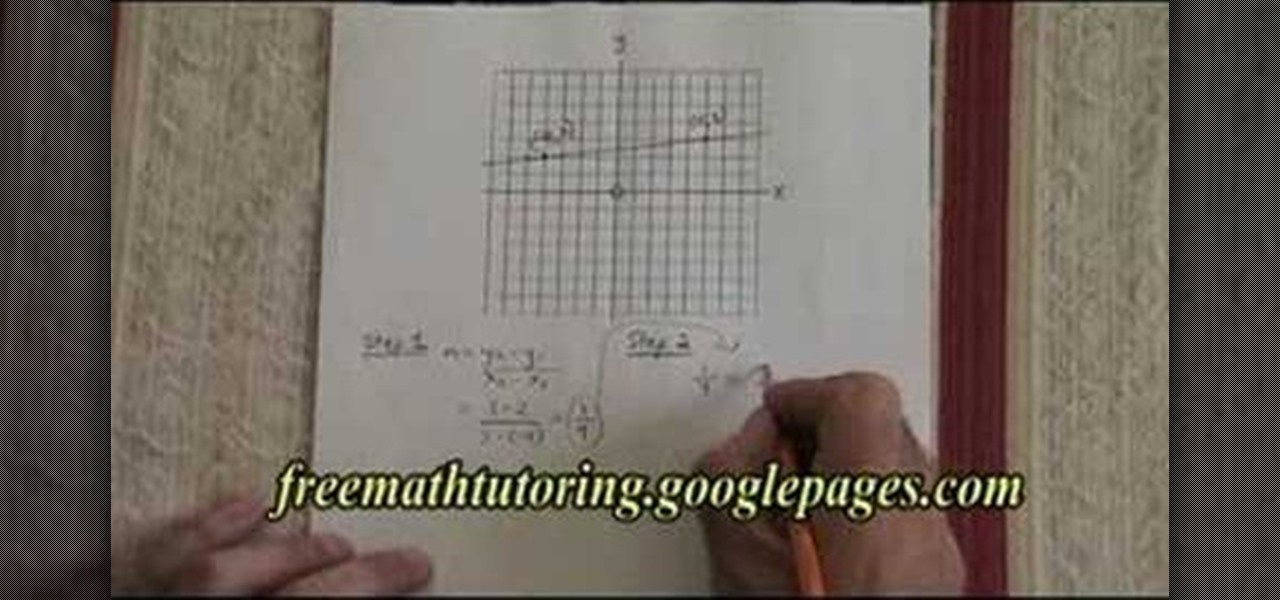
How To: Derive the equation of a straight line
In this tutorial the instructor shows how to derive a straight line equation. He shows us a process that consists of two steps. In step one he uses the slope formula to obtain the slope of the line which is the ratio of difference of y-coordinates and difference of x-coordinates. Now in the step two he uses the slope he obtained in the first step and equates it two a another slope derivation which uses a generic x, y variables and a real point. Now solving this equation he arrives at the equa...

How To: Solve math problems graphically
A video from The Free Math Tutor that shows you how to use graphs to solve simple linear algebraically problems in mathematics. This video is introductory in nature and teaches the viewer, proper plotting methods on graphs. The presenter also teaches you how to choose a proper scale for solving such problems. The first section of the video is about choosing a proper scale for the graph while the second section deals with solving the problem in a step wise and easy to understand way.
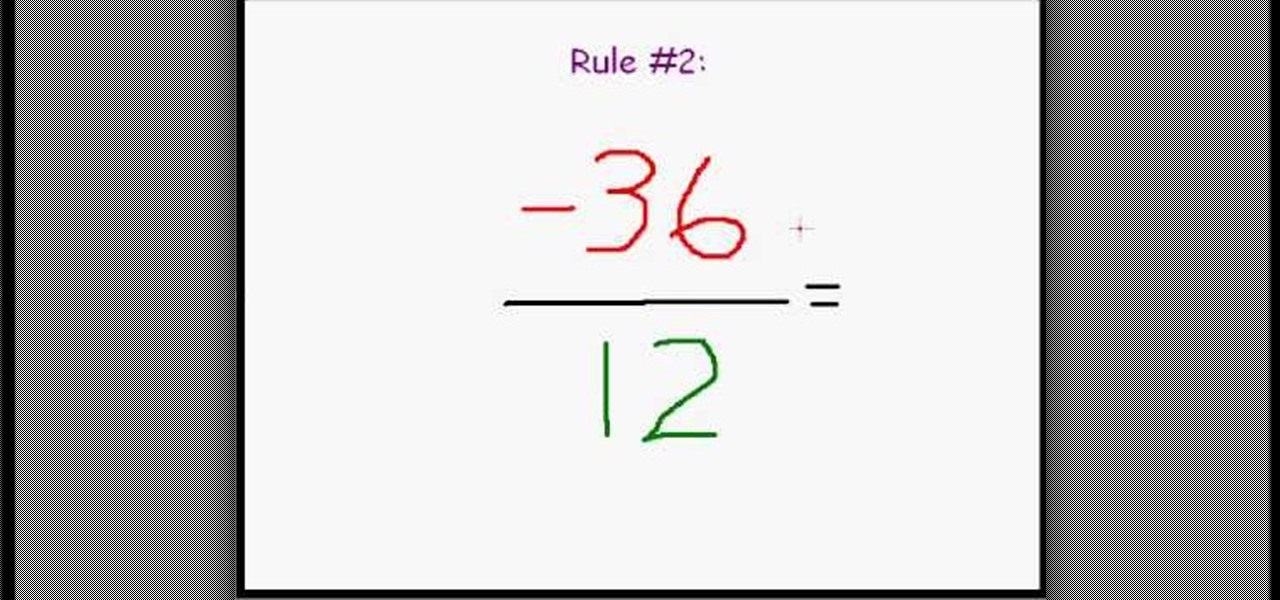
How To: Divide positive & negative numbers (integers)
Need to learn how to divide positive and negative numbers? This instructional video will teach you the step by step process that will make you comprehend how to divide positive and negative integers. Just watch and follow along and you will soon be a wiz at tackling these kind of math equations. The simple steps will leave no question and you will be able to do any problem concerning the division of positive and negative integers and you will be better at math.

How To: Multiply and divide fractions with Mr Binkley
In this tutorial the author Binkley shows how to multiply and divide fractions. He says that the first thing to remember before multiplying and dividing fractions is to first check if all the numbers are in the fraction form. Now in the second step if its multiplication we can directly multiply the fractions, but in step three if its a division we need to multiply the reciprocal of the second number to the first number to obtain the result. He further shows how to solve a couple of examples. ...
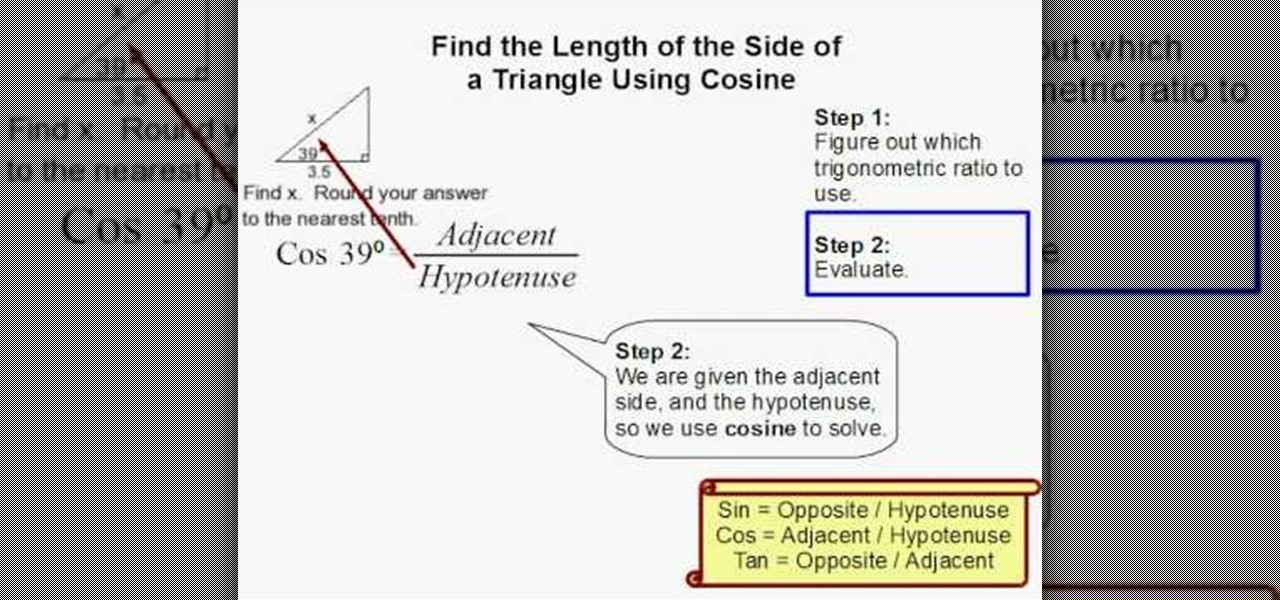
How To: Find the length of a side of a triangle using cosine
To find the length of a side of a triangle using cosine, you first need to find the angle and which sides are given. After you determine the angle and given sides, you'll need to figure out which trigonometric ratio to use. If you are given the adjacent side and the hypotenuse, you need to use cosine to solve. The degree equals adjacent divided by hypotenuse. In the example, Cos 39=3.5/x. After simplifying the equation, we found x to be 4.49. If the directions ask you to round, be sure to rou...

How To: Calculate the area & circumference of a circle
PapaPodcast's Peter shows us how to calculate the Area and Circumference of a Circle. Area is the amount of square units used to cover a circle. Circumference is the units around the edge of a circle. To calculate these two units we must find a radius and diameter. Diameter is a segment that joins two points on a circle and passes through the center of the circle. Radius is half of this amount. Watch the rest of the video to figure out how to use the radius and diameter to get the Area and Ci...
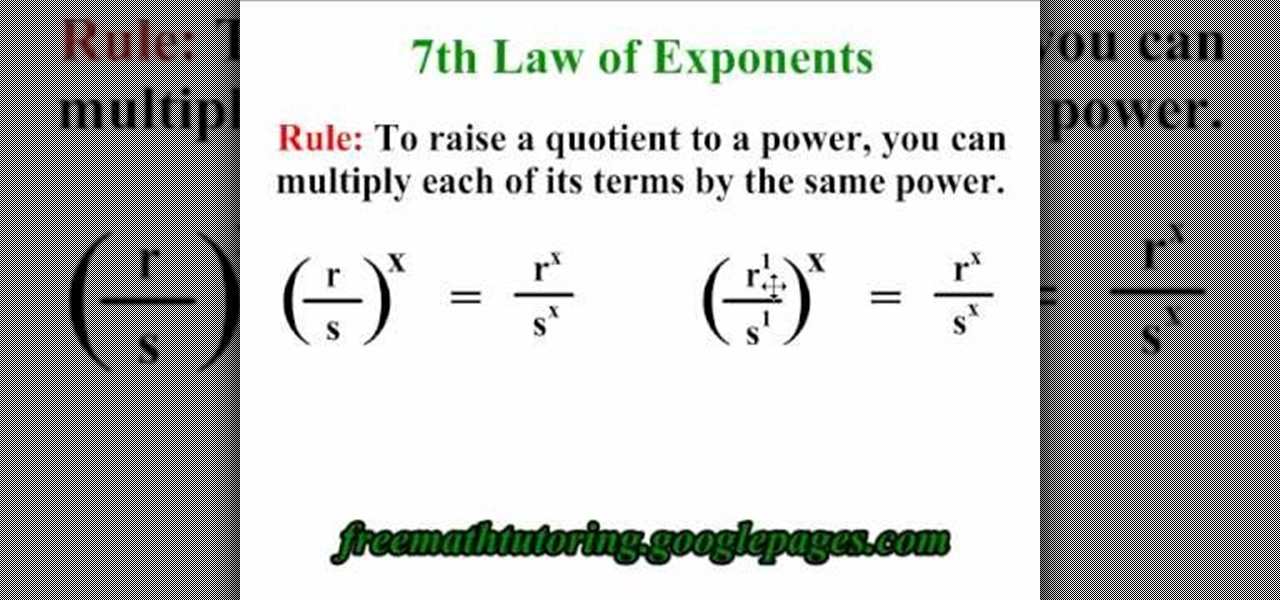
How To: Apply the 7th Law of Exponents
This video explains how to apply the 7th Law of Exponents. The principal rule explained here is that "To raise a quotient to a power, You can multiply each of its terms by the same power". This is a simple rule explained clearly with the help of a couple of examples, which is so simple that once you watch this video you will never make any mistake as far as the 7th Law of Exponents is concerned. It has also got a couple of more parts, do visit them and learn more.
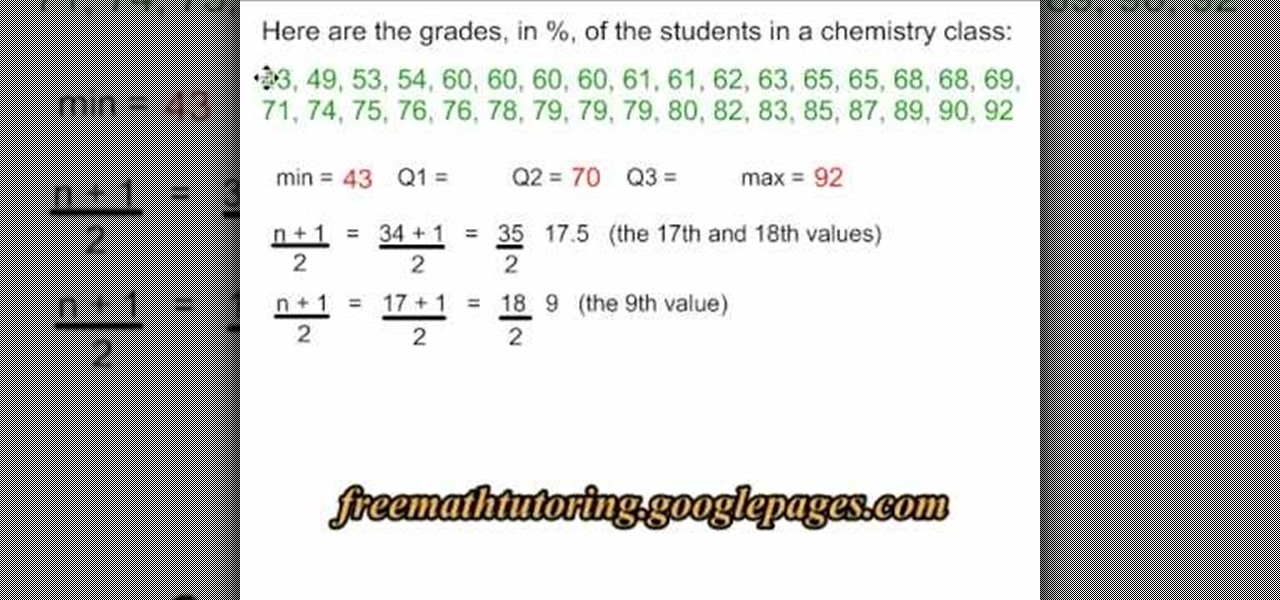
How To: Make a quartile diagram (aka, box and whisker plot)
This is an interesting mathematical instructional video on how to make a quartile diagram. This example is about 34 grades obtained by chemistry class students. We need a minimum value, a maximum value, Q1, Q2 and Q3 values to make a quartile diagram. The minimum is 43 and the maximum is 92. To calculate Q2 median formula (n+1 over 2)is used. The Q2 median is 17.5. So the average of 69 and 71 is 70 and hence Q2 70. Similarly Q1 is calculated as 61 and Q3 is calculated as 79. Now you can draw ...

How To: Use the Complex Trinomial factoring method
A video from free math tutoring that teaches you a method of factorization of a complex polynomial. The tutor shown in the video demonstrates how to factorize common functions of a variable by the factor method. This video isn't for advanced learners of mathematics. It is for beginner to intermediate level viewers.

How To: Identify the numerical coefficient of a monomial
In this tutorial the instructor discusses about the numeric coefficients that we come across while we work with polynomials. He goes on to discuss the numerical coefficient of a monomial stating that it is the number that is present before the variable in the monomial. He states that the numerical coefficient can also be negative or if there is no number present in front of the variable, it indicates that the numerical coefficient is one. This video helps in understanding what the numerical c...




